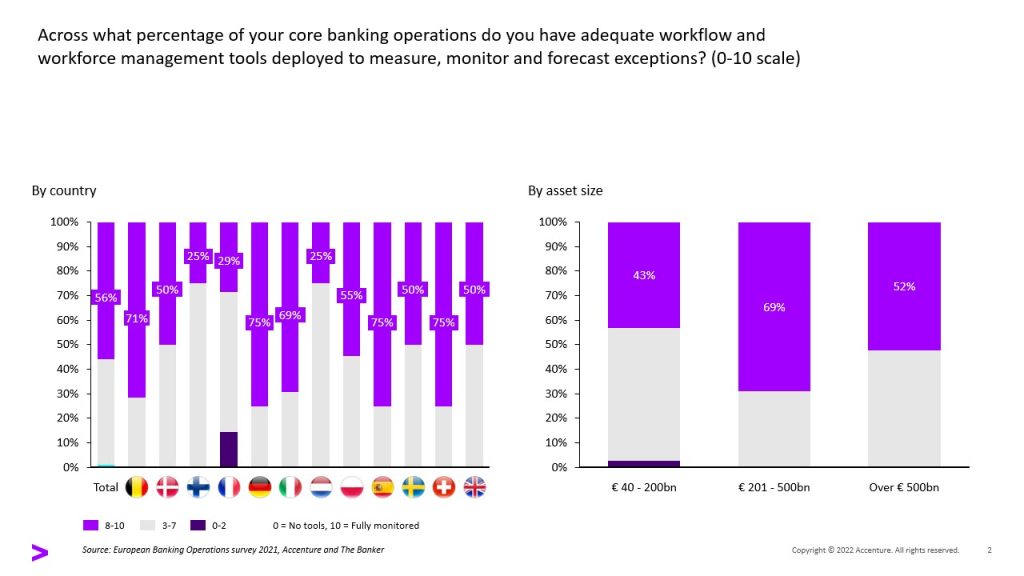Other parts of this series:
How is operations perceived within your bank? As a back-end function ripe for continual cost reductions? Or as an embedded part of an integrated end-to-end design process, collaborating with other areas to create compelling and cost-effective experiences for customers?
If your answer was the first rather than second of these options, it’s time for a rethink. Far from just being a cost centre to be optimised, operations today is pivotal to any bank’s ability to create value. In recent years, this reality has been demonstrated decisively by the digital-only neobanks. Now the incumbent players are catching on.
Time for a revolution
The need to see operations with fresh eyes isn’t new. A year ago, in this blog, I highlighted that the pandemic was accelerating changes in customer behaviour, which in turn was making operational efficiency even more vital. And I called for banks to respond by launching an operations revolution to tackle the “operational debt” being built up by siloed design decisions.
My views in that blog post were validated by the Future-Ready Banking Operations Study we’d undertaken earlier in the year. Now our follow-up research – the European Banking Operations Survey, conducted in November 2021 by Accenture and The Banker among 100+ banks in 12 countries – has confirmed that concrete action is becoming more urgent by the day.
The data/operations disconnect
What does it tell us? Among other things, that a disconnect has opened up between operations and technology: a gap that banks must close or risk losing their competitive edge.
As an example, take exceptions handling. As Figure 1 shows, most banks are confident they have good data visibility to understand the root causes of exceptions – with almost four in five large banks saying this is the case.

But when our respondents were asked to assess the adequacy of their workflow and workforce management tools to measure, monitor and forecast exceptions across their core banking operations, the larger banks’ level of confidence dropped off dramatically (see Figure 2). And looking across the findings, smaller banks seem to struggle most with technology expertise in core operations.

Why operations – and why now?
Why does this gap matter? And why does it matter now more than ever? As I mentioned earlier, many banks have a long legacy of regarding operations as simply the back end of a front-end, customer-facing process. Today, that view isn’t just outdated. It’s a barrier to customer-focused innovation.
As my everyday client conversations show, more and more banks are coming to recognise this. They’re increasingly looking to use operations as part of end-to-end design in a way that makes customers’ lives easier while also helping to drive down costs.
The effect? An expansion of operations’ role and remit. The goal of doing things faster, cheaper and more easily has always been there. But importantly, in the wake of PSD2, this focus is now combined with the move to an open API architecture and into the open finance arena – advances that have major implications for operations.
While the unprecedented peaks in activity and volumes seen during the pandemic may not continue, open API architectures make it harder to predict which elements of operations will be needed to handle spikes in demand. Think surges in contactless payments or data service access requests linked to real-world events. So it’s key that the scalability needed to handle these is built into the bank’s operational architecture.
Bringing operations and technology together
Bridging the disconnect between operations requires not just scalability, but also closer alignment and integration between them. This can involve a big culture shift. While technology rather than operations has historically driven the agenda, it’s increasingly understood that operations is closer to the customer’s needs and issues. So operations should really be taking the lead, while using agile processes and iterative approaches to support collaboration with technology teams.
This helps to ensure that business expectations are met during implementation – and that the technology is tailored to deliver customer solutions and experiences that are fit-for-purpose. The result? The whole lifecycle of projects – from definition to implementation and testing – is based on an understanding of the customer’s needs and wants.
In some banks, this ever-closer union between operations and technology means even the term “operations” is passing its use-by date. As banks become more digital, the need for operations and back-office roles declines – and the balance shifts increasingly to customer care. This change requires the right data insights, technology platforms and technology skills across operations.
From monolithic behemoth to multifaceted capability
A further aspect of the changes underway is a lively debate about the wider treatment strategy for operations. In particular, there’s a growing view that operations should no longer be treated as one big behemoth, but as a more nuanced and multifaceted capability.
This involves revisiting every activity undertaken in operations to identify which are potential sources of competitive advantage and which aren’t. Those that do offer this opportunity should be invested in to differentiate them in the market; examples might include credit risk assessment.
Conversely, there are other operations activities that banks undertake simply by the nature of what they do, and which offer little potential for competitive advantage. With these, the focus should be on achieving the lowest possible cost, possibly by using utility solutions to make the economics of incumbent banking work. One example could be cash management.
Refocusing on future value
The message? Operations in many banks is at an inflection point: one where the bank either seizes the opportunity opened up by advances like digitalisation, open banking and new customer experiences, or carries on with high legacy costs.
Given the pace of technology innovation, what’s clear is that simply looking to take 5% or 10% of costs out of operations each year is nowhere near ambitious enough. It’s time to unleash the power of operations as an engine of value and growth.
In my next blog post, I’ll examine how operations can help create new journeys for colleagues and customers. So stay tuned. In the meantime, if you’d like to discuss anything I’ve said, please get in touch. I’d love to hear from you. To learn more, read my article Operations as a competitive advantage for banking.
To learn more about the Future-Ready Banking Operations Study, read the full report, “Elevate every decision with intelligent banking operations”.
Read report











